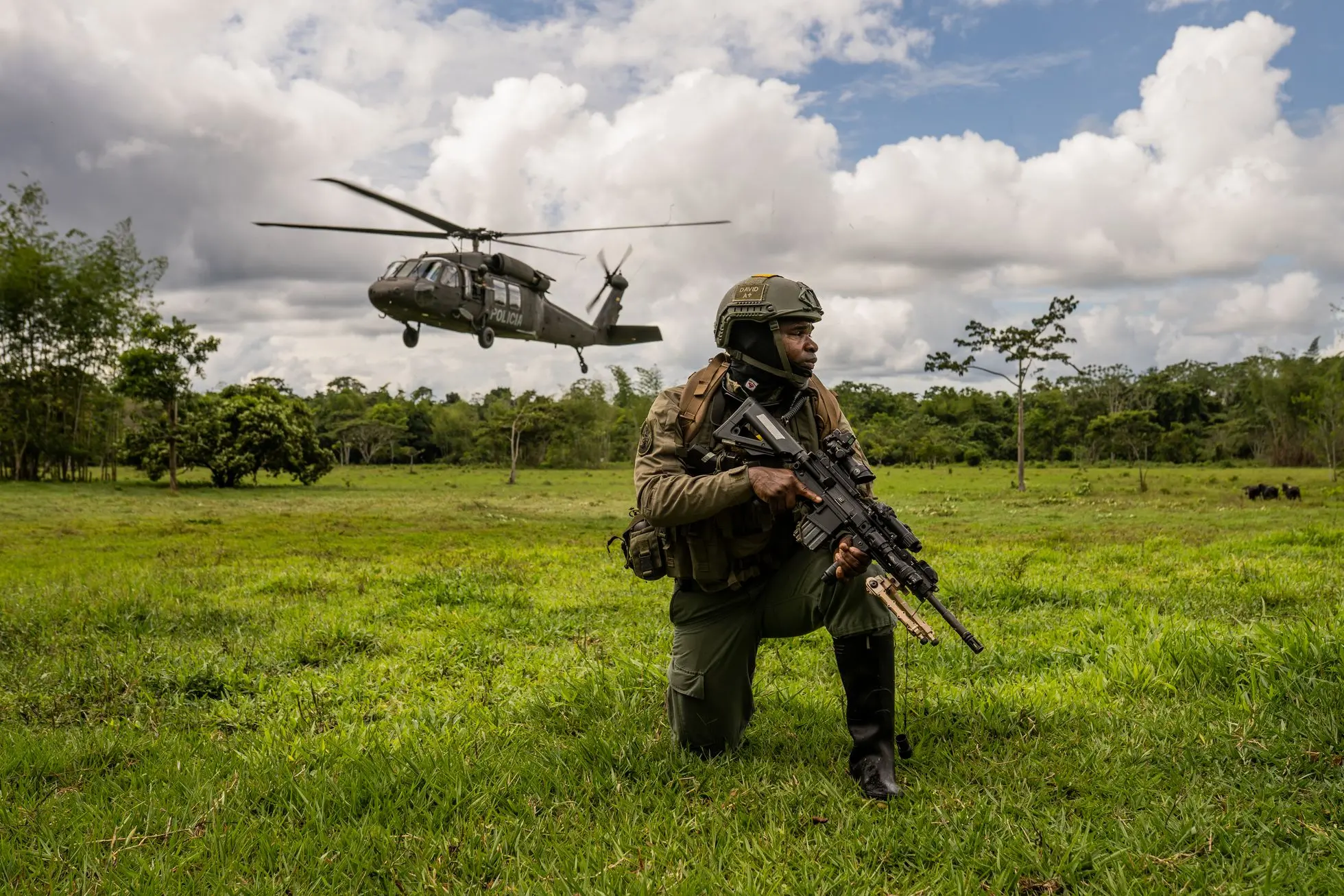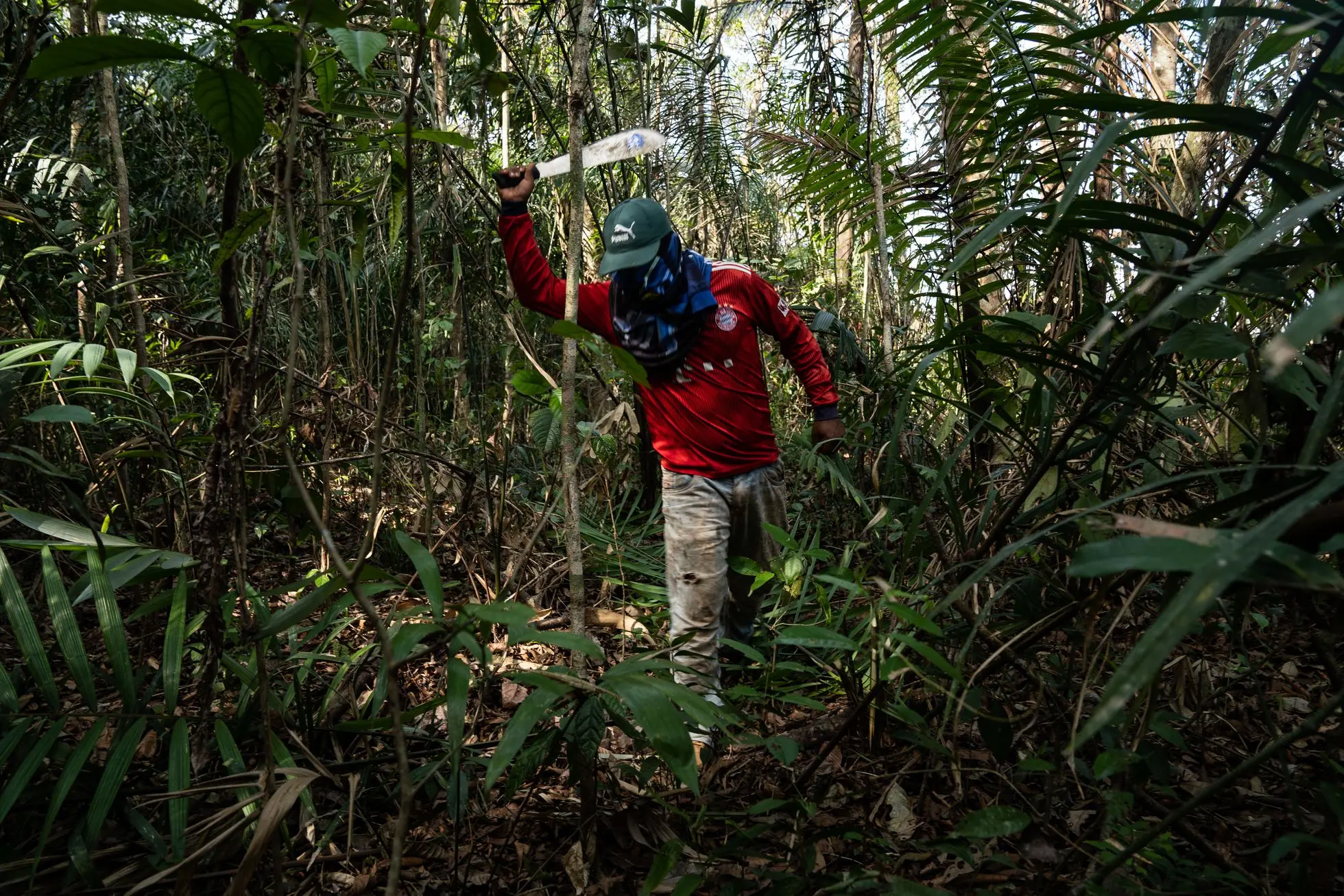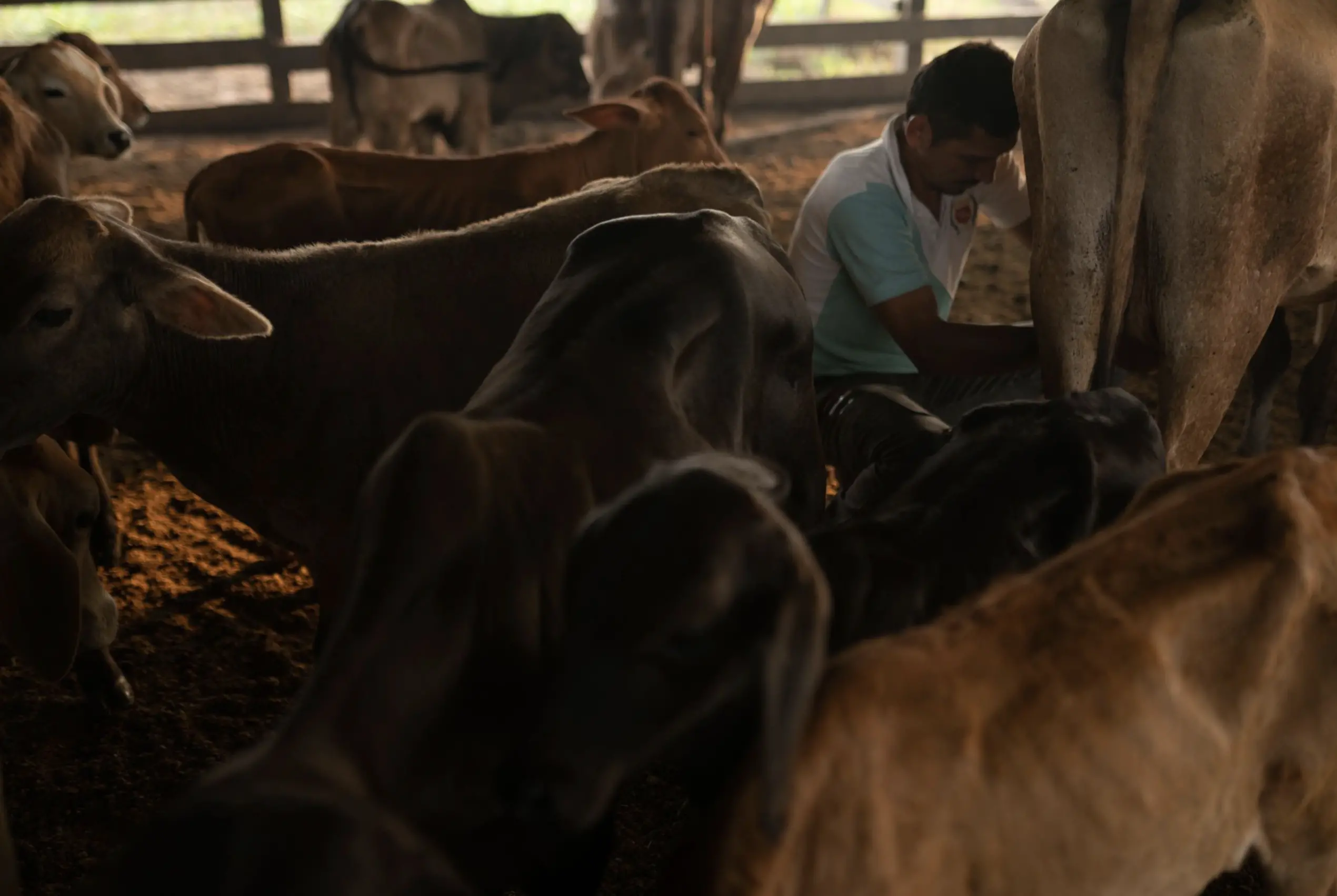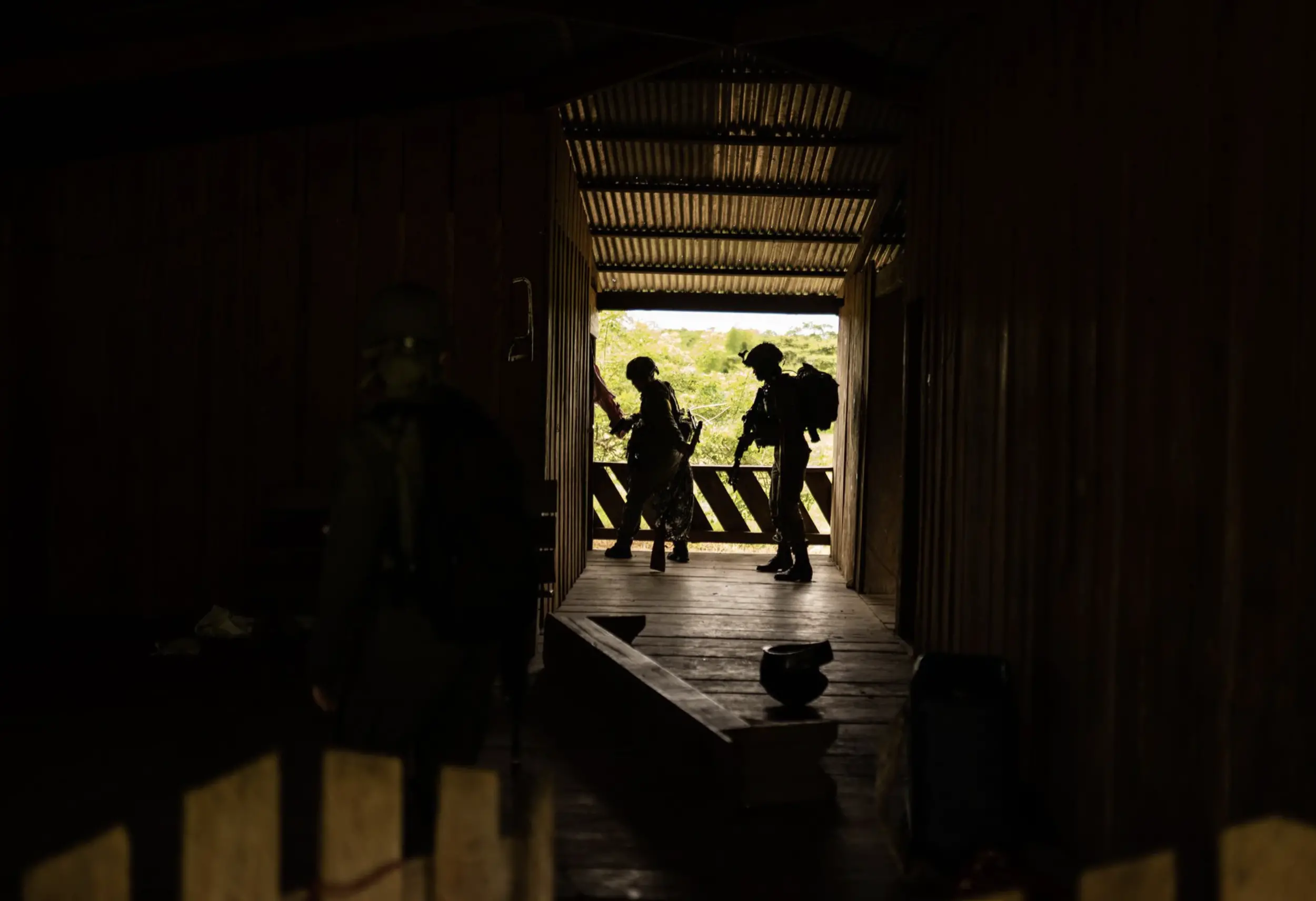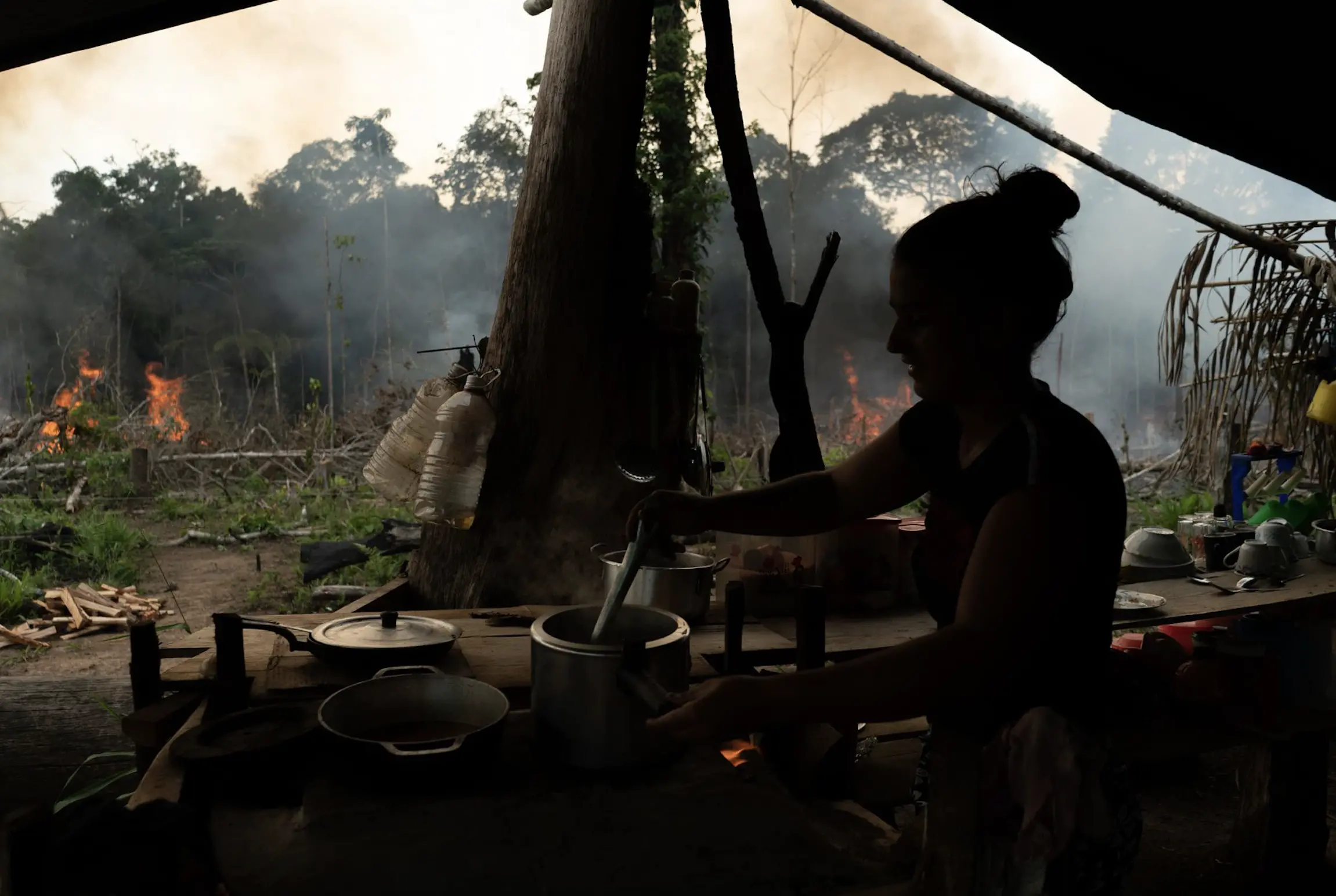This story excerpt was translated from Spanish. To read the original story in full, visit El País. You may also view the original story on the Rainforest Journalism Fund website here. Our website is available in English, Spanish, bahasa Indonesia, French, and Portuguese.
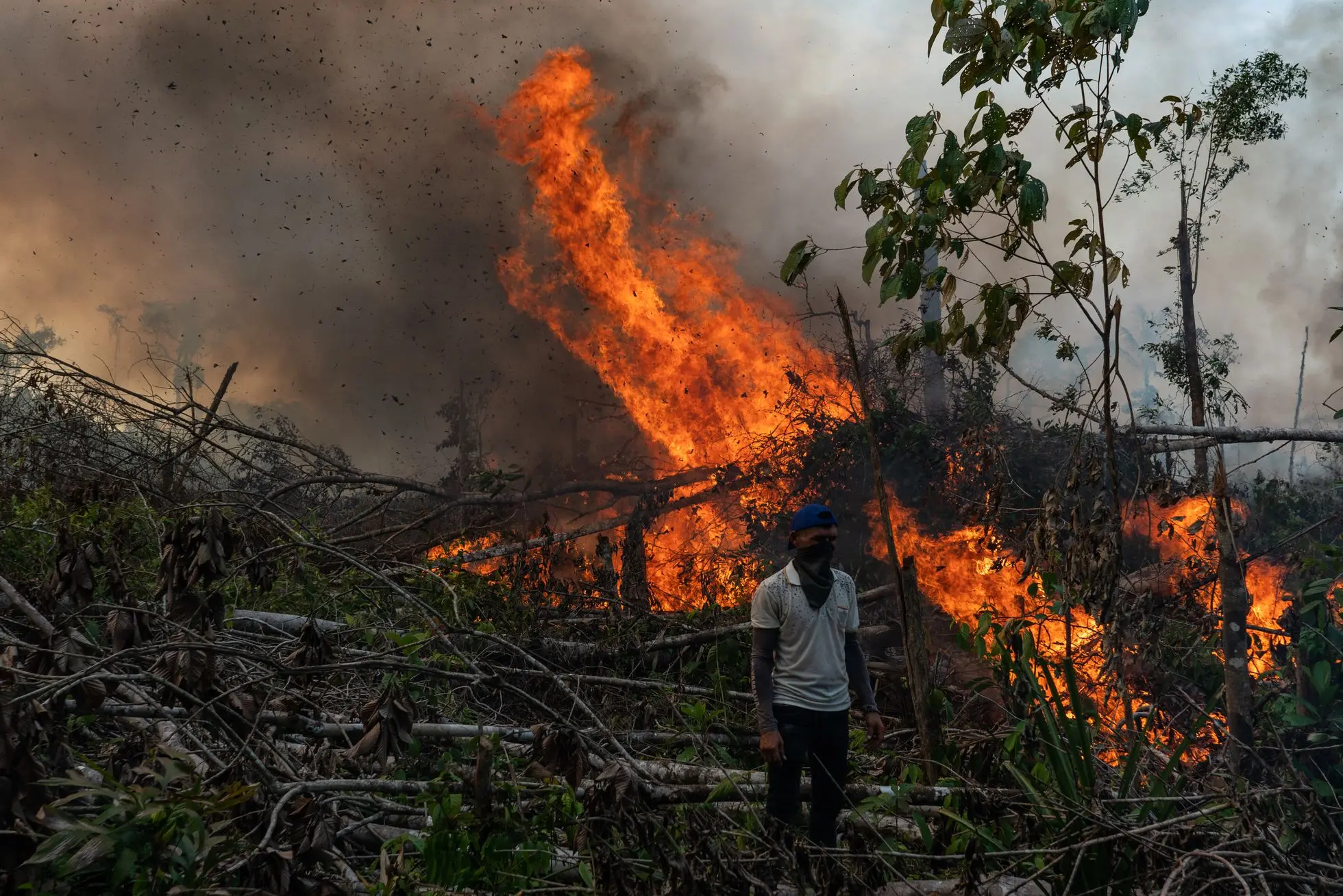
In mid-February, at the height of the burning season in the Colombian Amazon, a 30-year-old man walked out onto his four-hectare plot of land with fuel in one hand and a lighter in the other. Much of the rainforest had already collapsed a few months earlier, and in its place were a few fallen logs and dense layers of dry leaves and shrubs, ready for burning. Fredy left a trail of flames wherever he stepped, which quickly got out of control. The young farmer took shelter at a safe distance from the heat of the burning. The fire continued to grow until a thick cloud of white smoke covered the entire view, even the summer-reddened sun. An apocalyptic landscape.

As a nonprofit journalism organization, we depend on your support to fund journalism covering underreported issues around the world. Donate any amount today to become a Pulitzer Center Champion and receive exclusive benefits!
For environmentalists, these fire scenes are terrifying. Seen from overflights, the smoke from the burns stretches for miles and destroys the Amazon's forested ecosystems, the very forests that absorb greenhouse gases and help slow climate change.
For farmers, fires are part of the agricultural cycle. For decades, the onset of the dry season in January has marked a new burning season, when farmers raze forests to introduce pasture for their cattle and, in some areas, coca plantations. "The cattle reproduce and one has to deforest to keep the cattle and sustain oneself," explains Fredy, who preferred to keep his last name confidential for security reasons.
